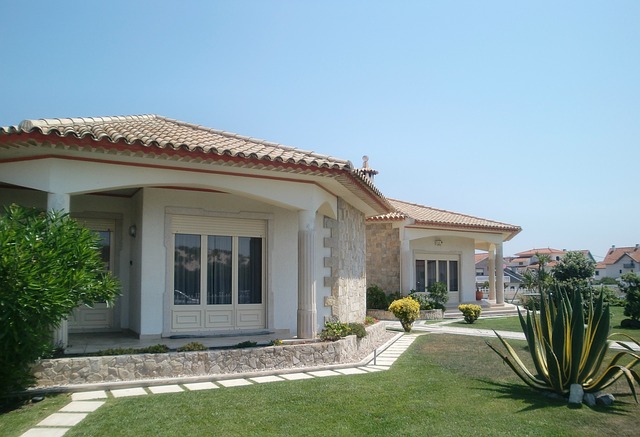Are you planning your next trip?
Have you ever thought about going to Ibiza on your next trip? Known as one of the best travel destinations, the island attracts millions of people from all over the world. Moreover, not only is it attractive for young people but also there are family-friendly villas in Ibiza.
Where to go in Ibiza
CALA DE SANT VICENT
Sant Vicent was once the most isolated area of Ibiza, to the point of forcing its neighbors to travel by sea to the capital if they did not want to spend entire days traveling. Now, however, it is an ideal tourist center for a family vacation. From its small port excursions depart to the island of Tagomago and in the vicinity you can also visit the Es Culleram Cave.
A short distance away is the tiny town of Sant Vicent, with its charming church, which began to be built in 1827 and was inaugurated in 1838. The main reason that it took 11 years to finish was that there were very few inhabitants in the area. and they had very limited resources. It is rectangular in shape and is characterized by being bare of ornaments. It contains the main altar, six secondary chapels, is topped by a simple bell tower and has the peculiarity that the porch is not located in front of the temple, as in other parishes, but to the left, in the western part of the nave.
TOWN OF BALÀFIA
One of the best examples of traditional Ibizan architecture can be seen in the old town of Balàfia. It is located a few meters from the town of Sant Llorenç and can be reached on foot in a few minutes. The complex is made up of five country houses and two defensive towers, which make up an area of great archaeological interest. Some towers and houses have white crosses painted on the façade, a ritual that supposedly protected these homes from any assault.
Sant Llorenç is a small town with a lot of history, surrounded by countryside and bathed in wonderful light. As in all towns, everything revolves around the church, which is characterized by having a single arch at the entrance, like the nearby temple of Santa Gertrudis. The bell tower, located today in the center of the façade, was placed at one end. However, in a reform undertaken in the 19th century, it was moved to its current location.
In the village there is a bar and, next to the church, a park that has an outdoor picnic area.
OVES DE CAN MARÇÀ
The Can Marçà caves are located in the north of the island in the Port of Sant Miquel. This cave is one of the main attractions of Ibiza since its ancient geological forms, its waterfalls and artificially recovered water courses allow its visitors to enjoy an idyllic natural environment.
In the North of the island of Ibiza, in the Port of Sant Miquel, is located Sa Cova de Can Marçà, in a natural environment with incomparable views of the bay. In the 70s, the Belgian caver Jean Pierre Van Den Abeelle arrived in the town of San Miguel, who became interested in the Can Marçà Cave. The inhabitants of Sant Miquel helped him locate the entrance and exit of the Cave on the cliffs of the port. Shortly after, work began to make its accessibility possible.
After a path dug into the rock, you reach the entrance of the cave at a height of 12/14 meters above sea level, from where the visit begins. The cave is over 100,000 years old and was formed by telluric faults. It has passed through glaciations and tropical heats, being at present almost fossilized, except in the deepest galleries, where the drip continues to form beautiful stalactites and stalagmites. The cavity called Can Marçà was discovered and used by smugglers, who hid packages of merchandise in it, lifting them from the sea from an opening located at a height of 8/10 meters. You can clearly distinguish the red or black paint signs that marked the way to another exit in case of flight or emergency. In the geological forms, the richness of the underground water course that flowed is evident, leaving the waterfalls and water courses fossilized. The materials that can be seen inside the cave are basically calcium carbonate, iron oxide, magnesium, clay, etc.
The contributions of the geologists and cavers who have intervened for the fine tuning of the cave have consisted of reproducing what existed in remote times, recovering the waterfalls and courses that existed in those times. In the geological forms, the richness of the underground water course that flowed is evident, leaving the waterfalls and water courses fossilized. The materials that can be seen inside the cave are basically calcium carbonate, iron oxide, magnesium, clay, etc. The contributions of the geologists and cavers who have intervened for the fine tuning of the cave have consisted of reproducing what existed in remote times, recovering the waterfalls and courses that existed in those times. In the geological forms, the richness of the underground water course that flowed is evident, leaving the waterfalls and water courses fossilized. The materials that can be seen inside the cave are basically calcium carbonate, iron oxide, magnesium, clay, etc. The contributions of the geologists and cavers who have intervened for the fine tuning of the cave have consisted of reproducing what existed in remote times, recovering the waterfalls and courses that existed in those times. The materials that can be seen inside the cave are basically calcium carbonate, iron oxide, magnesium, clay, etc. The contributions of the geologists and cavers who have intervened for the fine-tuning of the cave have consisted of reproducing what existed in remote times, recovering the waterfalls and courses that existed in those times. The materials that can be seen inside the cave are basically calcium carbonate, iron oxide, magnesium, clay, etc.
Dalt Vila
It is an excellent example of a fortified acropolis that is exceptionally preserved in its walls the successive traces of the first Phoenician settlements as well as from the Arab and Catalan periods to the Renaissance bastions. The long process of building the defensive walls has not reduced the street plan, but incorporated them in its last phase. The intact fortifications from the 16th century are an unrepeatable witness to military engineering and architecture as well as Renaissance aesthetics. This Italian-Spanish model had a great influence. Especially in the construction and fortification of cities in the New World. Dalt Vila is the oldest part, which emerges like an acropolis on the mountain facing the sea.
Its architecture and physiognomy have not changed since its construction in the 16th century, based on the military precepts of the Renaissance. The defensive walls and bastions have incorporated the pre-existing ones, making it possible to study the stratigraphy of all the fortifications.
Museu d’Art Contemporani d’Eivissa
For many years, Ibiza has been a haven for international artists. Many of his works belong to the Museu d’Art Contemporani d’Eivissa (MACE), which exhibits these magnificent works but, at the same time, opts for the innovation of promoting young artists from the island. Until now, the museum has organized, since 1964, the Eivissa International Biennial Festival, now called Ibigrafic.
The museum is housed in one of the most emblematic buildings within the Renaissance walled enclosure. It is about the weapons room and the military warehouses. In 2007, the Museum began a major renovation that culminated in 2012 and which has also led to the expansion of the collection.







